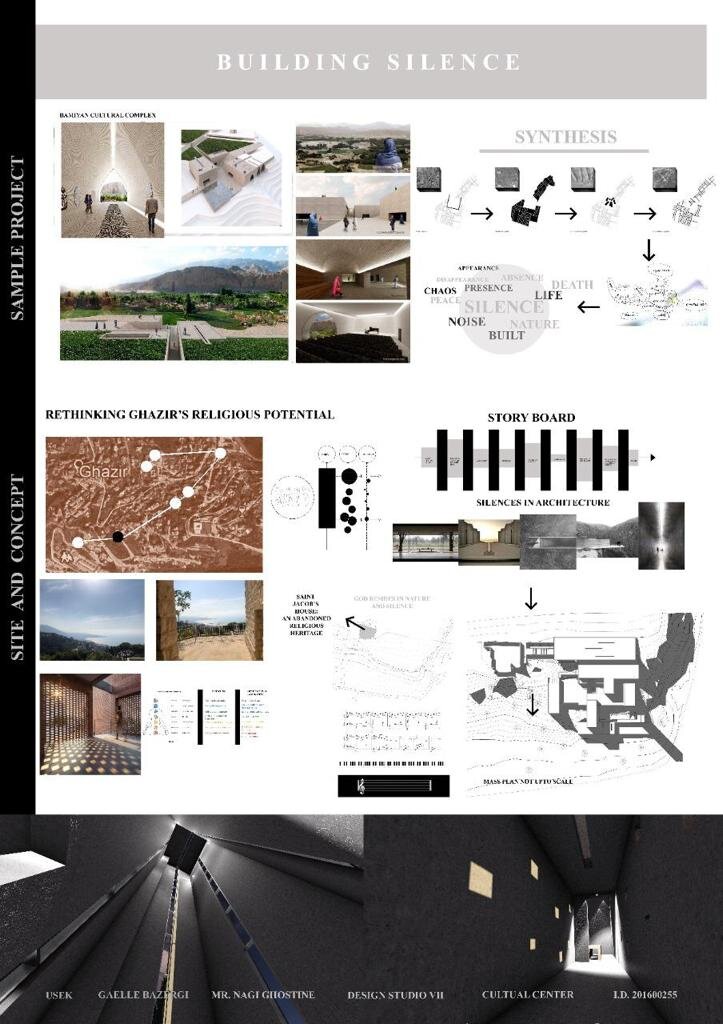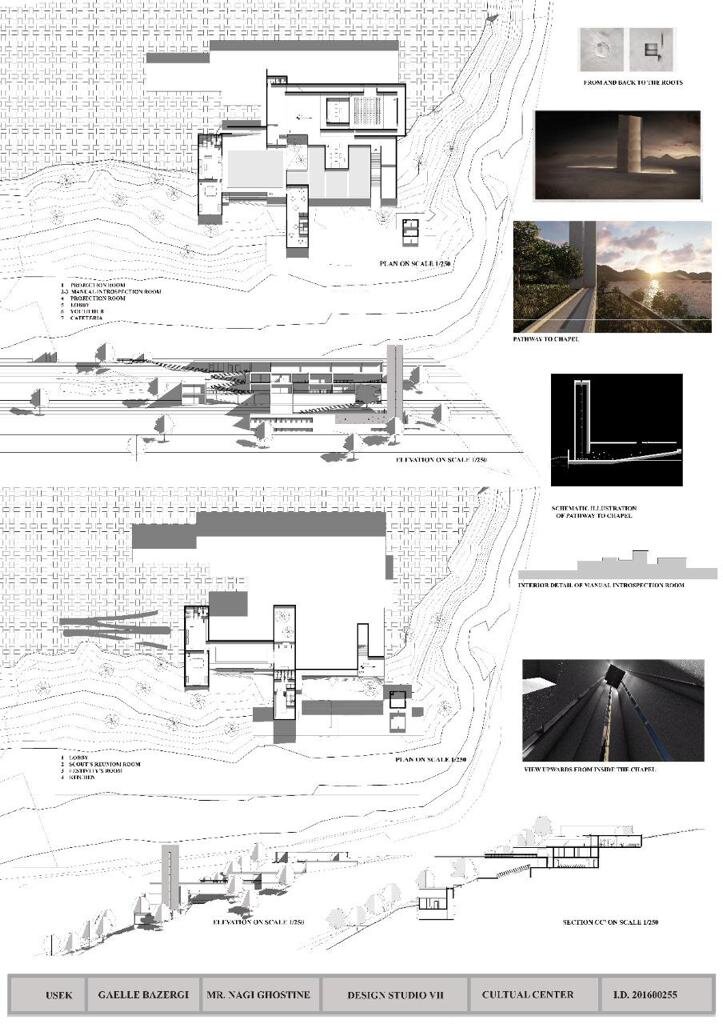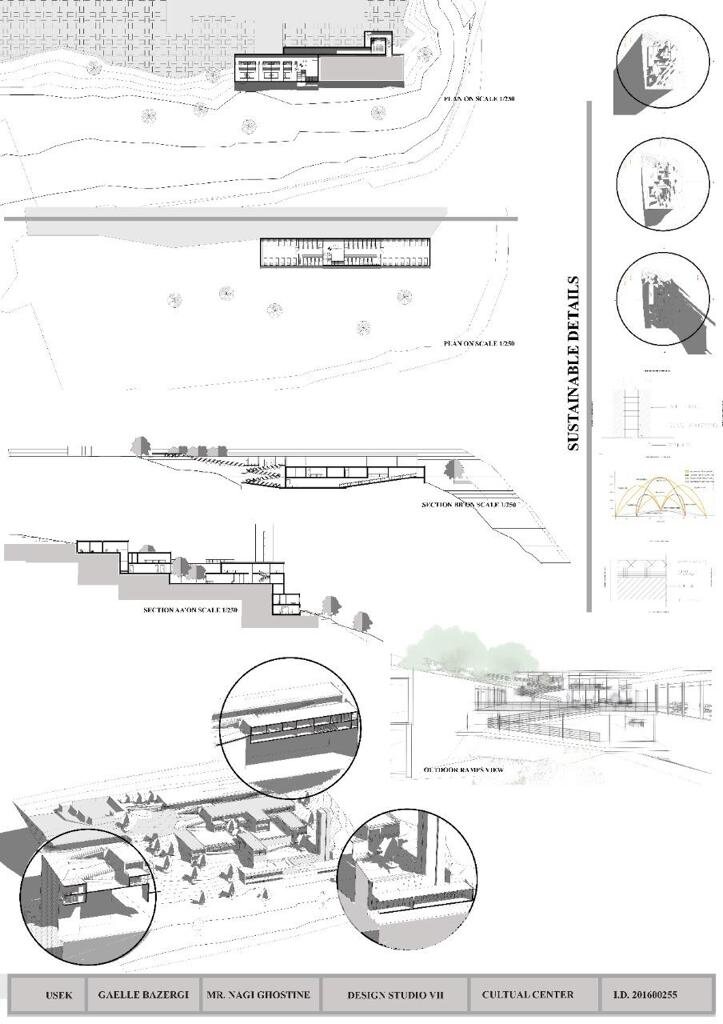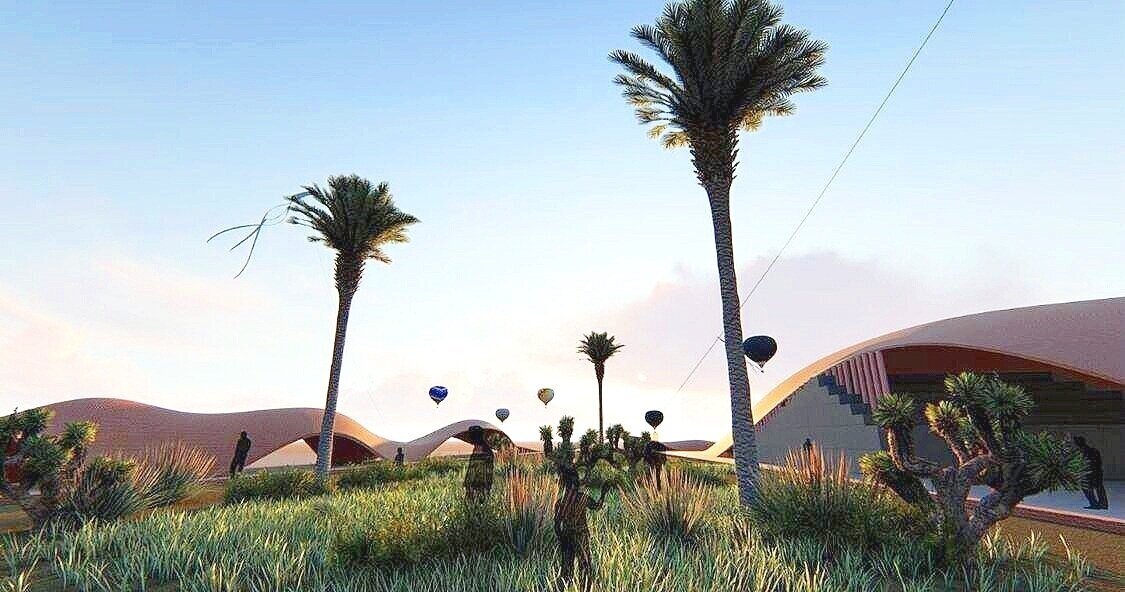GAËLLE BAZERGI
Portrait courtesy of Gaëlle Bazergi.
Gaëlle Bazergi is a final-year architecture student at Holy Spirit University of Kaslik (USEK), Lebanon. She is passionate about architecture and regards it as a social responsibility. Gaëlle currently serves as the Middle East Regional Ambassador for the American Institute of Architecture Students (AIAS), after serving as the Chapter President at USEK (2019-2020). For her, good architecture is humanitarian; one that seeks the creation of better environments, and positive neighborhoods. So to start implementing her love for “creating happy spaces,” she founded her own small business “MUSE by Gaelle,” where she adds positive energy to spaces through arts and architecture.
Where are you from?
Beirut, Lebanon
What is your favorite dish?
Steak Frites
Three additional fun facts about Gaëlle:
I love to romanticize my life by having slow mornings, collecting postcards, lighting candles, enjoying nature and hot drinks. I was probably born in the wrong epoch.
I cannot work (design or paint) if I’m not wearing rings.
I’m a huge food lover. Also, I think eating is a full experience. My plate needs to look aesthetically pleasing.
In the Dimension of Space and Gender: Architecture, as a Middle Eastern Woman
What inspired you to study architecture?
Choosing architecture school for me didn’t come as an aha moment or a sudden realization. I have always known that I was going to pursue a creative field. In fact, architecture was always in the back of my mind.
As a child, I was very interested in arts such as painting, sculpting, anything creative really. Art is a very important subject in our home, my father is passionate about painting. If anyone visited the home, people would see his pieces everywhere. I strongly believe that when one is surrounded by art, it is inevitable that he/she ends up creating more of it. As I grew a bit older, I noticed that I always had an opinion about spaces and buildings around me; the feelings they evoke, and how political and impactful they are in nature. This is what really pushed me into going to architecture school, it is fair to say that architecture by itself was and still is my main muse.
One Happy Project: Competition of a Cultural and Dance Center in Burkina Faso, Africa. Image courtesy of Gaëlle Bazergi.
One Happy Project: Competition of a Cultural and Dance Center in Burkina Faso, Africa. Image courtesy of Gaëlle Bazergi.
Name a woman architect (preferably Arab or MENA) who most influenced you as an emerging professional? Why or how did they?
If I had to name one woman architect who most influenced me as an emerging professional, I would, without a second thought, name the Lebanese Architect, Lina Ghotmeh.
I strongly believe that people tend to feel influenced or inspired by the ones they can relate to. So for that, I chose Lina Ghotmeh, because I feel like she resembles me most. Here, I feel that we align on two main levels. First, she is a Lebanese woman-architect, she comes with a whole lot of history and post-war influence which makes Lebanese architects perceive architecture and heritage differently and more emotionally.
Second, I admire and respect her values and beliefs, which are beautifully applied in her designs. For instance, she perceives architecture as the Archeology of the future, and how it is imperative for her buildings and interventions to be humanist above all else.
Needless to say that I love her sensible twist and finesse in architecture, which really shows how subtle she is as a person. Last but not least, she is one of the very few women architects from the MENA region to shine internationally, which makes her an inspiration and a woman I personally look up to.
Design Studio Jury. One of Gaëlle’s favorite projects; a cultural and spiritual center. Image courtesy of Gaëlle Bazergi.
Name a favorite project completed by a Woman Architect (preferably Arab or MENA). Why is it your favorite?
As I stated previously, Lina Ghotmeh is my favorite woman architect. And among her projects, there is one that I love most which is “Beirut Stone Garden”. This project is my favorite for several reasons. First and foremost, being a Beiruty myself, I feel very much connected to it and to the story behind it. Ghotmeh in her project chose to portray Beirut. Beirut, the post-war beauty. Beirut, the wounded memory. Beirut, the resilient woman. By the materiality and texture of the stone, she exposes the rigidity and resilience of it but makes it a point to have a lot of bullet-like openings, to keep the memory alive. The memory of a city that keeps on fighting, but remains beautiful. It is almost a call for action. Lastly, this architectural masterpiece survived the devastating explosion of August 4th, which makes it today, not only a post-war memory but also a reminder of this horrible incident. By all means, it remains, like Beirut, a wounded Lebanese woman, fighting to survive in a space she should call home.
How does your culture/ethnicity affect your studies and the way you design?
As Middle Eastern, Lebanese women, we have the tendency to experience spaces differently. Not every public space is considered “safe” or agreeable for us. So, I do consider this concept of gender inclusivity when conceptualizing my projects. But most of all, my culture and ethnicity shaped me as a person, who later became the Architect I am. It is from those cultural roots that I got my values, all of which I cherish and try to portray in every work I do. I see my projects as middle eastern women. I work on creating spaces and volumes that are sensible, but resilient. Spaces that are provocative and seductive, in their mystery. Volumes that are subtle and respectful to their urban entourage, but can’t pass by unnoticed. Here, we talk about materiality, transparency, light, integration, etc. All the elements I play with to make my designs as feminine as possible.



Are there any organizations that helped you grow in architecture? How did they help you grow?
Yes, definitely. One specific organization that shaped me a lot as an architect and as a person, is the American Institute of Architecture Students (AIAS). In this organization, I grew first as a member, to later become chapter president locally at USEK, and conclude my AIAS journey by becoming the Middle East Ambassador and serve at the Council of Global Representatives. My belonging to this institution helped me grow a lot as a leader, work and manage large groups, be a good team player, and above all serve and give back to my community, locally and regionally. So by far, joining the AIAS remains the best decision I took during architecture school, and till today, I cherish every moment of serving as Regional Ambassador with my amazing team, who keeps on enriching me every day, culturally, and architecturally.
Be your own MUSE. A preview of Gaëlle’s work as an artist and Founder of her small online business, M U S E x Gaëlle. Image courtesy of Gaëlle Bazergi.
What is your favorite memory in architecture school or work? Why?
My favorite memories in architecture schools are the overnights I spent with my friends. But other than that, and on a more professional level, I loved my first meeting with my AIAS Team as a chapter president at USEK. It was one of my first leadership roles, and I got to meet and work with amazing people and achieve a lot together. This meeting was filled with ice-breakers, cupcakes, balloons, and positive energies …
Gaëlle’s first AIAS meeting as Chapter President. Image courtesy of Gaëlle Bazergi.
If you were able to talk to your younger self, what would you say?
If I was able to talk to my younger self, I would thank her for her hard work. For her passion for the Arts since day one. Every book she read and drawing she drew, every museum she visited, and every curious question she asked has shaped me as the architect and woman I am today.
I would tell her to be less anxious, as she will end up achieving all that she wanted to.
I would tell her to be less of a perfectionist, and take life less seriously, as I learned to accept recently.
Finally, as Pablo Picasso once said, “Every child is an artist. The problem is how to remain an artist once we grow up.” So to my younger self, her pure heart and creative spirit I say, I’m so proud of how far you’ve come, and I’m so happy to still carry you with me. You inspire me every day. You keep me grounded and humble. You are the artist I am.
In the dimension of space and gender. Image courtesy of Gaëlle Bazergi.
What would you want to say to the next generation of aspiring Arab women architects?
To the next generation of aspiring Arab women architects, whom I am a part of, I say: Be fierce, be soft, be powerful, and dare to build the woman you are. An architecture that looks like you.
I have always perceived being a woman as a stroke of luck, and I enjoy every bit of it. I don’t think in 2021, we should still talk about not getting the job because you’re not a man… This might definitely be different for other women from different backgrounds, but I am generally hopeful and optimistic for us, aspiring Arab women architects.
Archaeological sites: Middle Eastern gems. Image courtesy of Gaëlle Bazergi.
In terms of rising concerns and problems (in the architectural profession) over the past year, what is one change that you wish saw would happen and still did not?
In terms of rising concerns over the past year in the architecture profession, it saddens me that architects are still limited by urban laws and legislations that do not always consider the mental well-being of their citizens or concepts such as inclusivity and co-living. I feel like we, as architects, have a huge social responsibility and skills, that we are somewhat hindered to fully exploit due to these legal and/or financial constraints.
Another problem that I wish didn’t exist, is how recent graduates tend to sell themselves short by accepting unpaid internships or bad work conditions. This is due to the decrease in job opportunities that we have been facing recently.









